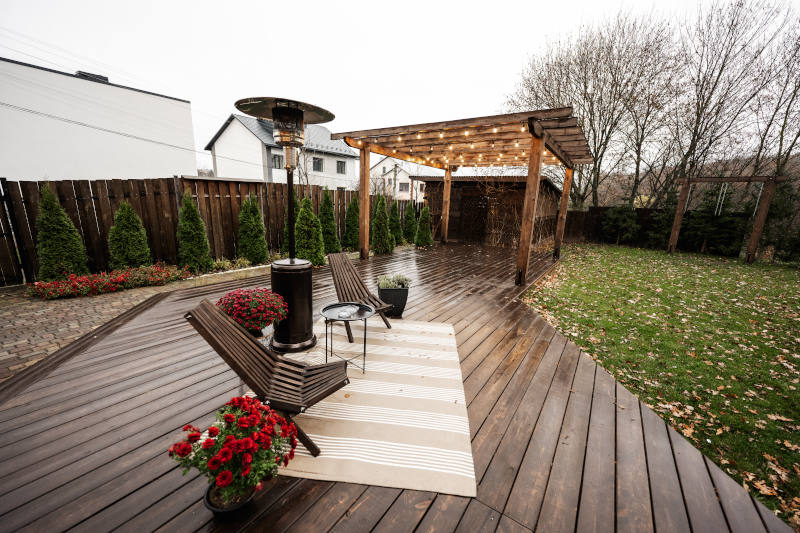Winter is the perfect time to snuggle to a blanket on your outdoor furniture and watch the rain from under your covered patio. However, you won’t be able to withstand the harsh cold without a patio heater. So here comes a famous question many people ask: can you use a patio heater under a covered patio? Or will it pose unnecessary risks? Let’s find out!
When Can You Use a Patio Heater Under a Covered Patio?
To answer your question, you can use a patio heater under a covered patio, but with conditions. Here’s a list of the factors you should consider before installing a heater.
Type of Heater
The type of your heater is the most important factor that’ll dictate whether you can install it under a covered patio. Here’s a quick list of the most famous types and whether they’re safe:
Electric heaters: These are the easiest and safest to use under a roof because they come with reliable safety features. However, ensure you have an electrical outlet on your patio and extend your budget a bit because they can be costly.
Propane heaters: These are famous because they’re budget-friendly and produce sufficient heat. However, to install one under a covered patio, you should make sure there’s proper ventilation and enough space between it and the roof. Also, make sure the BTU output isn’t too high.
Wood: Wood-burning heaters are the most affordable, but they give off smoke, which isn’t ideal under a covered patio. Over time, it can damage the structure of your roof and stain it.
Natural gas: Most natural gas heaters aren’t portable, so they aren’t the most convenient. They’re suitable for covered patios, but only if you don’t have flammable materials like umbrellas and wooden structures nearby.
Ventilation
Most patios are only covered from above, leaving the sides open for aeration. However, some are completely enclosed and shielded from all sides to protect the owners from harsh weather conditions.
If your patio is the former, you can install a patio heater without an issue, but if yours is the latter, you’ll risk a lot if you take this step. Installing a heater in a poorly ventilated area is a huge fire hazard.
Patio Roof Material
Some roof materials, like wood, are more prone to stains and damage than others. For example, if you install a mushroom patio heater where the head goes near the roof, you risk affecting the aesthetic of your patio roof. In some cases, the material also poses a fire hazard if kept near a heater.
Before making your purchase, you should check your patio roof material. If it isn’t suitable, consider getting a ground patio heater so that the heat can’t reach the roof or ditching the idea altogether.
Clearance Around the Heater
Most patio heaters come with clearance instructions that dictate how many inches of space you should keep between the heater and any object, including the roof. It’s essential you abide by these guidelines because they can protect you from fire accidents. For instance, your patio heater head shouldn’t be touching the roof of your patio under any circumstances.
The distance you’ll need to maintain depends on the type of heater you buy, so make sure to check the manual that comes with it before installation.
Ground Under the Heater
Many people make the mistake of installing patio heaters on grassy, uneven grounds. However, this can cause fires if the heater tilts over and falls.
To ensure maximum safety, install the heater on level ground and weigh it down with heavy objects. You can use sandbags or water reservoirs. Some heaters also come with their own reservoirs, so you won’t have to purchase a separate one.
Duration of Use
Patio heaters are designed to work only a few hours per day. If you use them for an entire day without giving them breaks, they’ll be more likely to cause issues, especially when under roofs. When you purchase a new heater, go through its instructions manual and check the recommended duration of use per day.
To Wrap Up
Installing a patio heater under a covered patio makes for a cozy atmosphere and a comfortable seating area during the colder months. However, before taking such a step, you should consider the type of heater you’ll buy, the airflow in your patio, your patio roof material, and the clearance around the heater. On top of that, you should make sure you install it on level ground and use it for a reasonable number of hours per day.

